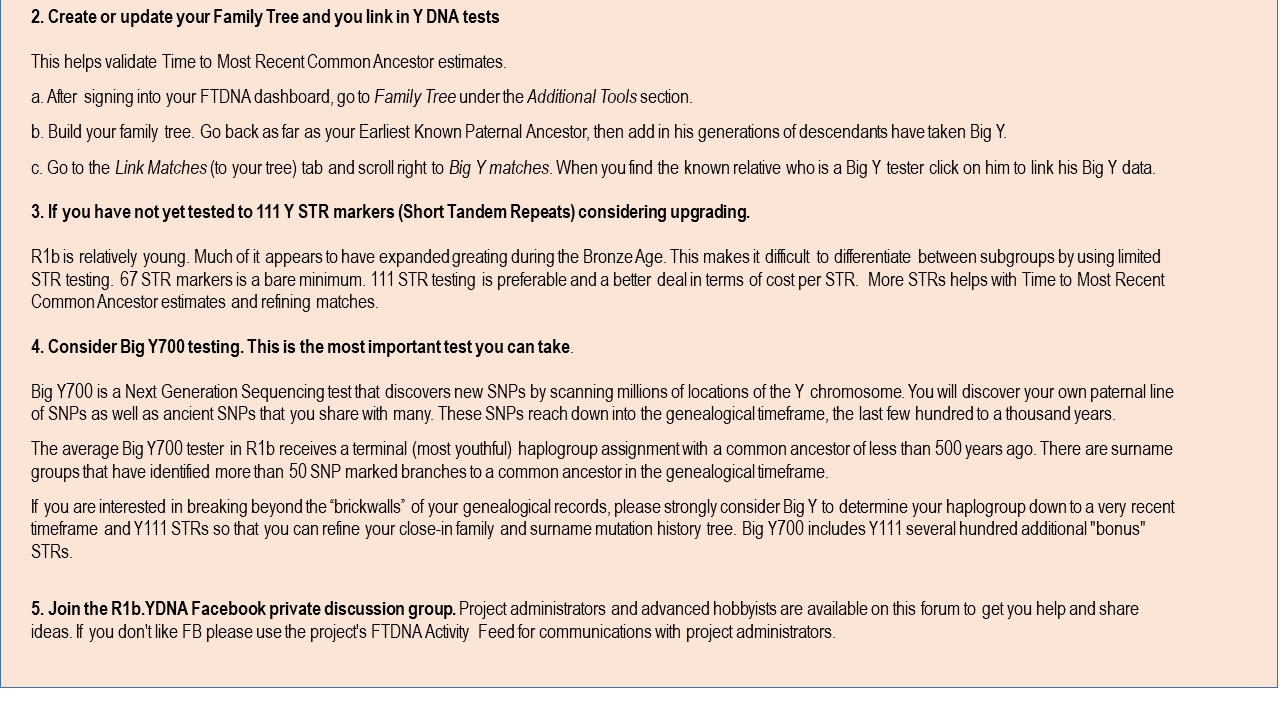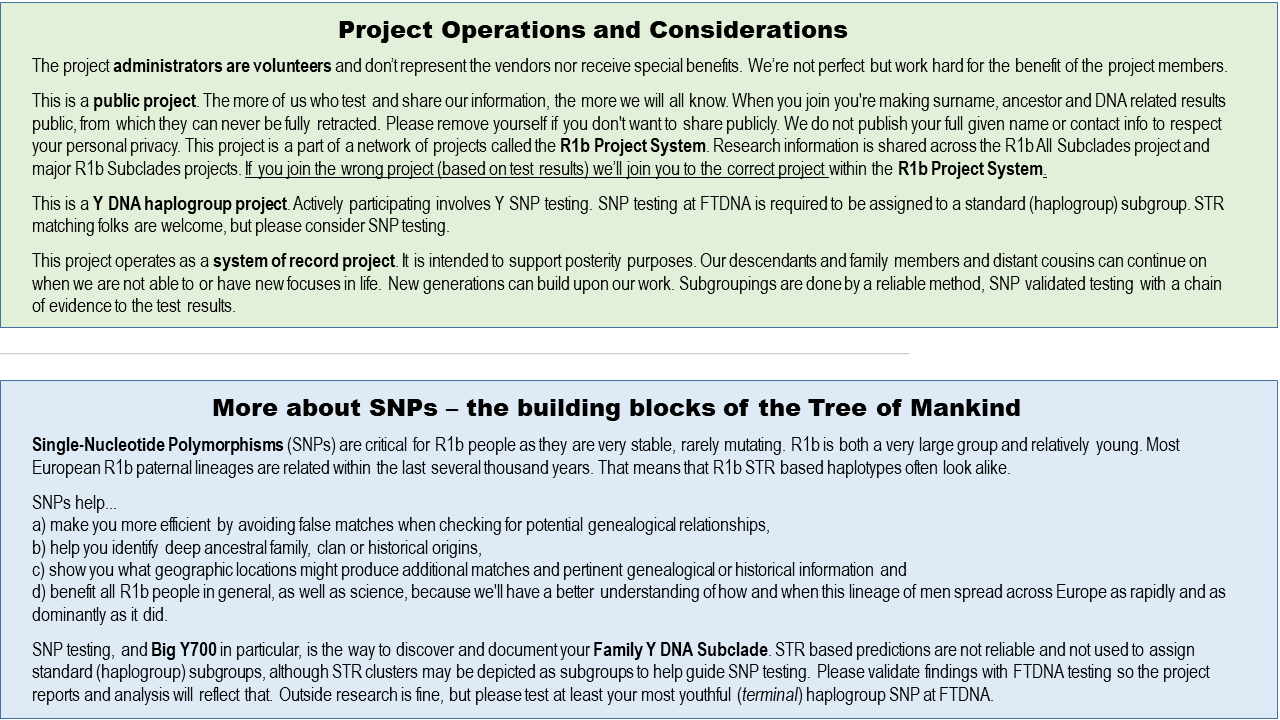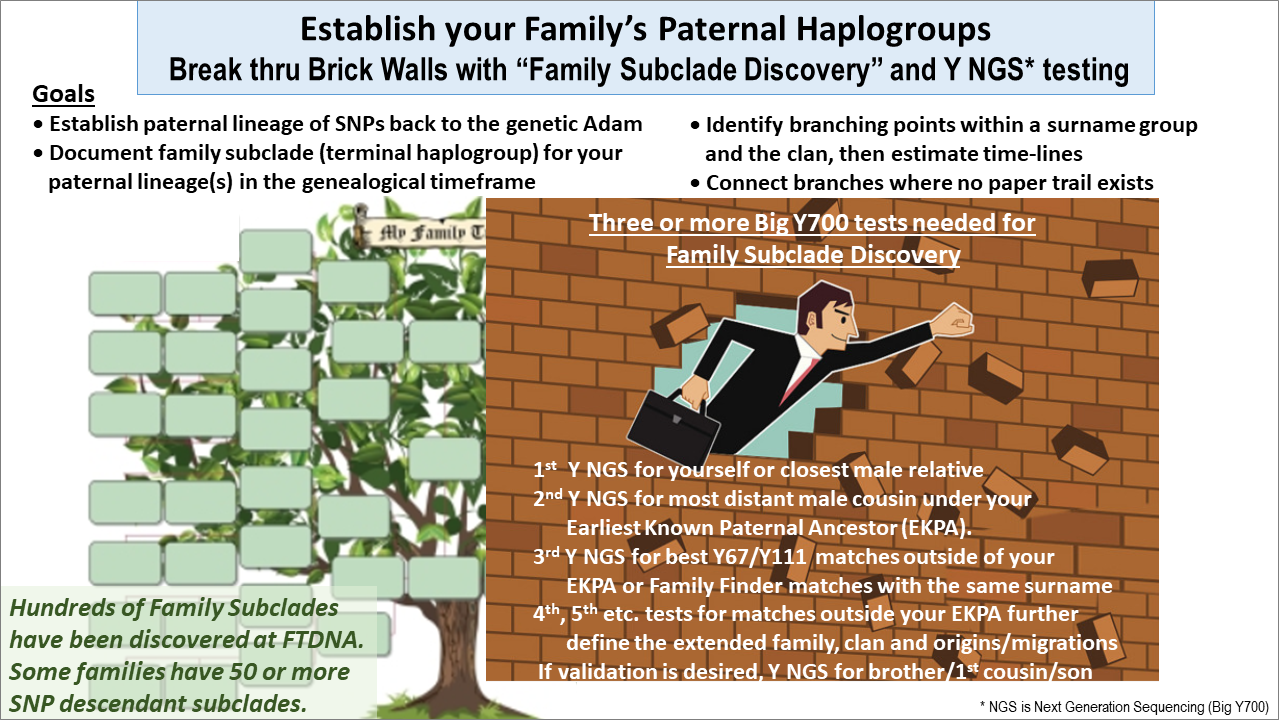About us
PROJECT
BACKGROUND, KEY STEPS TO TAKE, OPERATIONS AND MORE
You are welcome to join if you are a member of this Y haplogroup. Y DNA testing at FTDNA is required to join. Just click the JOIN button above in the banner and sign in with your kit #.
The project goals and introduction are on the About/Overview web page. Y chromosome SNPs are the primary method of marking branches on the Giant Tree of Mankind, so this project is for people who are interested in SNP testing.

The Contents below contain
- Key Steps to Take
- Project Operations and Considerations
- More about SNPs
- Frequently Asked Questions (FAQ)


Go to top


Go to top
FREQUENTLY ASKED QUESTIONS ARE ANSWERED ON THE R1b FAQ PAGE
Why Y DNA testing?
Why DNA testing at a full platform genetic genealogy company?
Why Y STRs and how are they used?
Why Y SNPs and how are they used?
Why Big Y Next Generation Sequencing?
What should I do with my Big Y results?
Should I upgrade Y STRs, even if I have limited or no matches?
What are SNP Packs and which should I consider?
What are terminal SNPs? novel SNPs? private and public SNPs?
Thank you for your consideration. Please review the About/Results web page for graphics and results.
Go to top
You are welcome to join if you are a member of this Y haplogroup. Y DNA testing at FTDNA is required to join. Just click the JOIN button above in the banner and sign in with your kit #.
The project goals and introduction are on the About/Overview web page. Y chromosome SNPs are the primary method of marking branches on the Giant Tree of Mankind, so this project is for people who are interested in SNP testing.

The Contents below contain
- Key Steps to Take
- Project Operations and Considerations
- More about SNPs
- Frequently Asked Questions (FAQ)


Go to top


Go to top
FREQUENTLY ASKED QUESTIONS ARE ANSWERED ON THE R1b FAQ PAGE
Why Y DNA testing?
Why DNA testing at a full platform genetic genealogy company?
Why Y STRs and how are they used?
Why Y SNPs and how are they used?
Why Big Y Next Generation Sequencing?
What should I do with my Big Y results?
Should I upgrade Y STRs, even if I have limited or no matches?
What are SNP Packs and which should I consider?
What are terminal SNPs? novel SNPs? private and public SNPs?
Thank you for your consideration. Please review the About/Results web page for graphics and results.
Go to top